High Blood Pressure
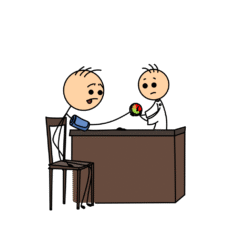
Summary & Suggestions
- Eat a healthy diet.
- Have plenty of fruits, veggies & whole grains.
- Try to incorporate high-fiber foods like beans and lentils regularly.
- Limit salt to 2000mg sodium/day. Most of the salt in our diets comes from pre-made & processed foods, so avoid these foods as much as possible. If you are going to eat pre-made foods, read nutrition labels! Aim for less than 120mg/5% Daily Value per serving.
- Minimize caffeine intake (coffee, tea, soda pop)
- Exercise regularly. Aim for 150 mins/week or 20 mins/day.
- Try to get enough good quality sleep.
- Decease or eliminate alcohol intake.
- Stop or reduce smoking.
- Manage your stress.
What is High Blood Pressure?
Blood pressure measures the pressure of blood against the walls of your blood vessels (arteries). The top number (systolic) is the pressure when your heart beats (contracts). The bottom number (diastolic) is the pressure when your heart relaxes in between beats. If you have high blood pressure, your heart has to work harder to pump blood through your blood vessels. This puts a strain on your heart, as well as the organs that rely on blood supply from your beating heart.
What is normal Blood Pressure?
| Category | Systolic/Diastolic |
| LOW Risk | 120/80 |
| MEDIUM Risk | 121-134/80-84 |
| HIGH Risk | 135+/85+ |
*Note that there are exceptions to this classification. If you have diabetes, kidney disease or renal failure, your blood pressure should generally be less than 130/80. If you are not sure what your target should be, please ask us next time you are in the office!
WHAT ARE THE HEALTH PROBLEMS CAUSED BY HIGH BLOOD PRESSURE?
High blood pressure can strain your heart AND affect blood supply to many organs. This can cause a variety of medical problems that include (but are not limited to):
- heart attack and heart failure
- stroke
- vision loss
- kidney disease
- sexual dysfunction
- blocked/narrowed arteries in the legs or arms causing pain or fatigue
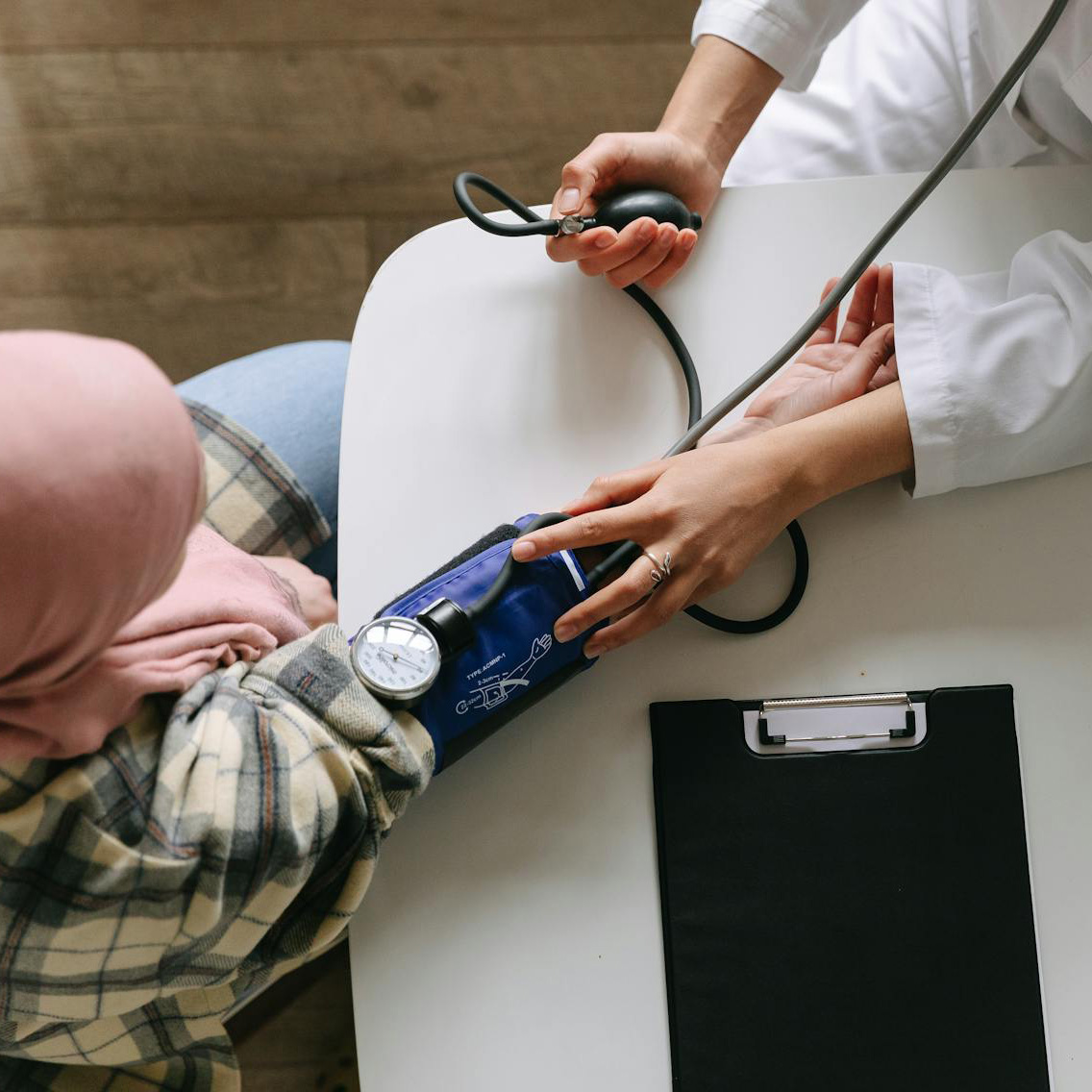
What Can You Do to Lower Your Blood Pressure?
(Or keep it from getting too high?)
1) EAT A HEART HEALTHY DIET
Eating a variety of fresh fruits and vegetables, nuts, seeds, whole grains and legumes, with small amounts of low-fat dairy products, fish and skinless chicken makes a great heart healthy eating plan that would also promote overall health and well being. Avoiding/limiting high sugar foods and sweetened beverages is also important. See recommendations in Canada’s food guide (https://food-guide.canada.ca/en/) and the DASH diet (Dietary Approaches to Stop Hypertension):
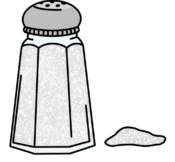
2) LOWER SALT/SODIUM INTAKE
Although sodium is needed for our bodies to work properly, too much sodium causes us to retain (hold on to) water, which can lead to puffiness, weight gain and high blood pressure. Having less sodium in our diets can help lower or avoid high blood pressure, which can also reduce our risk for heart disease and stroke. Learn more about Dietary sodium and health here: https://hypertension.ca/wp-content/uploads/2019/01/Sodium-Fact-Sheet-FINAL-Jan-23-2019.pdf
Recommendations for salt intake
In Canada, the recommended daily sodium intake is no more than 2300 mg of sodium per day. Note that Hypertension Canada Guidelines recommend less than 2000 mg of sodium per day for those with high blood pressure (This is only about 5g, or 1 teaspoon of salt/day).
Where is the salt coming from?
A lot of us eat too much sodium without even knowing it. As much as 75% of the salt we eat comes from processed, pre-packaged and restaurant/take-out foods. So the best way to reduce sodium intake is to avoid (or at least limit) prepared processed foods. When it cannot be avoided, it is very important to pay attention to nutrition labels. (If you are just learning about food labels, check out this article explaining all you need to know: https://www.unlockfood.ca/en/Articles/Nutrition-Labelling/Understanding-Food-Labels-in-Canada.aspx .
You can also read: Notes From Your Doctor: NUTRITION LABELS
If you have any questions, please ask us next time you are in the office!)
Products that have the most added salt include:
- Restaurant foods and take-out
- Cheeses
- Cold cuts & cured meats
- Soups
- Canned vegetables
- Frozen dinners and snack foods
- Pizzas, breads and rolls
- Sauces and condiments (like salad dressings, BBQ sauce, Worcestershire, ketchup, mustard & mayonnaise)
- Many of these foods are now available in low/no sodium versions, so read the labels!
A good general rule is to buy products that are labelled with less than 5% (120mg) of salt per serving.
How can you add flavour without salt?
- avoid adding salt to your food
- try herbs, spices, lemon, lime, vinegar or salt-free seasonings (BUT, be careful with sodium free seasoning blends if you have kidney problems- some of those products use potassium instead of sodium, which may not be a good idea for your kidneys)
- choose unsalted/low sodium canned foods, broth etc
- rinse canned beans and vegetables to reduce sodium
- use fresh poultry, fish and lean meat as opposed to canned, smoked or processed
- buy unsalted nuts
Can you go out to eat?
Of course! (What is the point of being healthier and living longer if you can’t enjoy yourself?) Try these tips if you are eating away from home:
- look at the restaurants menu before arriving. See if they have online nutrition information. If so, try to select options with the lowest sodium content
- choose fresh fruits and vegetables when available. Ask for oil and vinegar for your salad or ask for the dressing on the side.
- ask that your dish be prepared without added salt
- keep in mind that most restaurants serve much more than we need to eat at one sitting! Remember portion control and bring your leftovers home!
3) MONITOR YOUR CAFFEINE INTAKE
Caffeine may cause a short-lived, but dramatic rise in your blood pressure. We don’t know exactly what causes the spike in blood pressure, but we do know that some people are quite sensitive to caffeine, and for those people, avoiding/limiting caffeine intake is very important in controlling their blood pressure.
Caffeine containing foods include
- Coffee/tea (even decaffeinated coffee/tea has caffeine, it just has less)
- Green tea
- Soda pop (like Pepsi, Coke)
- Chocolate (and chocolate flavoured foods)
- Energy drinks
To check if caffeine may be raising your blood pressure, you can always check your blood pressure before drinking a cup of coffee, and then check it again 30-120 minutes later. If your blood pressure increases by 5-10 points, you may be sensitive to the blood pressure raising effects of caffeine.
If you’re planning to cut back on your caffeine intake, reduce your consumption gradually over several days/weeks to avoid withdrawal headaches.
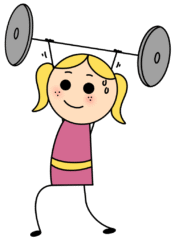
4) EXERCISE & MAINTAIN A HEALTHY WEIGHT
Being physically, active will not only help lower your blood pressure, but will also help manage your weight, control stress, and strengthen your heart!
How much exercise do you need?
We need 2.5 hours of moderate-vigorous aerobic activity per week which can be broken down into smaller sessions throughout the week (think 30 minutes 5 days/week, or a little more than 20 minutes/day).
We should also include strength building exercises 2 days per week. Flexibility or stretching exercises should be part of each of your sessions.
What is moderate or vigorous exercise?
With moderate exercise, your heart rate will go up, and your breathing will become faster, but you will still be able to carry on a conversation. Examples include fast walking or slow jogging, skating and bike riding.
Vigorous exercise increases your heart rate and your breathing a lot more. You will not be able to say more than a few words without stopping to catch your breath. Examples include running, hiking, dancing, playing soccer or basketball, snowshoeing, or cross country skiing.
What are strength building exercises?
Strength building exercises improve your muscle and bone strength. Examples include lifting weights, yoga, pilates, push-ups, sit ups, and walking.
How do you start?
Pick an activity you like, schedule it in, (preferably with 1-2 friends to keep you motivated) and just get moving! Learn more about being active with high blood pressure from the American Heart Association:
Get tips on being active when you have high blood pressure from the American College of Sports Medicine here:
https://www.exerciseismedicine.org/wp-content/uploads/2021/04/EIM_Rx-for-Health_Hypertension.pdf
5) MONITOR YOUR SLEEP
Sleeping less than 6 hours/night on a regular basis for a long period of time can impact your overall health AND increase your chances of developing high blood pressure (as well as obesity, diabetes and heart disease). The current thinking is that sleep helps control hormones that regulate stress and metabolism. If your sleep is chronically disturbed, the hormone balance can be affected.
One possible, treatable cause of sleep problems could be obstructive sleep apnea. Sleep apnea can cause you to stop breathing for short periods of time throughout the night. This means that you don’t wake up feeling rested even after you have had a good good nights sleep. Obstructive sleep apnoea is more common in those who snore and who are overweight. Sleep apnea can be treated. If you think you may have this problem, let us know so we can arrange testing!
If you think sleep is a problem for you go to mysleepwell.ca to learn more, or check out “Notes From Your Doctor: Sleep”
6) DECREASE ALCOHOL INTAKE
Decreasing how much alcohol you drink can help reduce your blood pressure. Men should have no more than 2 drinks/day (or a maximum of 14/week, but NOT ALL AT ONCE! Binge drinking can lead to many other problems). Women should not have more than 1-2 drinks/day (or a maximum of 9/week, again not all at once).
A glass of beer/cooler/cider – 5% alcohol content: 341ml or 12oz
A glass of wine – 12% alcohol content: 142ml or 5oz
A glass for spirits/rye/gin – 40% distilled alcohol content: 43ml or 1.5oz
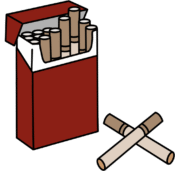
7) STOP (OR DECREASE) SMOKING
Smoking increases you your risk of heart disease, stroke and many types of cancer. Quitting smoking can decrease your risk of these diseases AND lower your blood pressure.
Chat with us to learn what aids are available to help you quit!
Learn more at: https://tobaccofree.novascotia.ca/
8) MANAGE YOUR STRESS
Being anxious, stressed or worrying can increase your blood pressure for a short period of time. When you are under stress, the body releases hormones that get you ready to respond to a threat:
Think of meeting a bear in the woods…you want your heart to beat faster so you can run away! This is great reaction when dealing with sudden short periods of stress (like our hungry bear), but not ideal if you are feeling like that for long periods of time. Not only is your body & mind on constant alert (which doesn’t feel good), but you are more likely to react to stress in unhealthy ways if it is prolonged. Many of us turn to alcohol, caffeine, over eating unhealthy foods, or sitting in front of the television to cope with our stress. These behaviours can also increase your blood pressure.
What can you do to help with stress?
- Eat healthy food regularly. Try to avoid processed foods that are high in salt and additives. Avoid caffeine and other stimulants.
- Exercise regularly. This not only lowers your blood pressure, but will improve your stress levels and feelings of well being over time.
- Get enough sleep. Too little sleep can make problems seem worse than they are.
- Try yoga and meditation to help you relax. Look at some free Apps that cab help you get started (Calm, Headspace)
- Try not to turn to alcohol, cannabis or smoking. Although these might make you feel better for a short period of time, they will make things worse over the long term if used regularly.
- Try connecting with friends or family. Social connection has been shown to help decrease anxiety.
To learn more about managing your stress, check out: https://cmha.ca/brochure/stress/ or https://mha.nshealth.ca/en
FAQ
-
Usually the answer is no. Your blood pressure reading is probably normal BECAUSE you are taking blood pressure medication. There are some exceptions though. For example, if you have made significant changes in your lifestyle (like decreasing your salt or caffeine intake, quitting smoking, starting an exercise program or weight loss etc), you may be able to cut down or even stop your medication. If you think this is your situation, please discuss this with us when you are in the office so we can come up with a plan to decrease/discontinue medication(s) safely while monitoring your blood pressure.
Learn More
Article: How to keep my blood pressure normal (Hypertension Canada).
